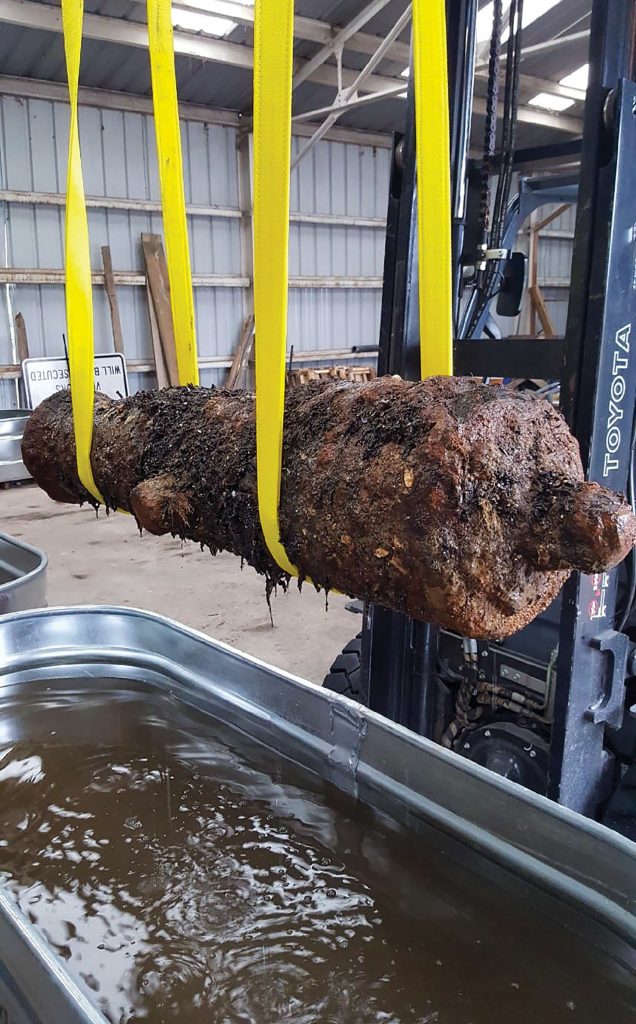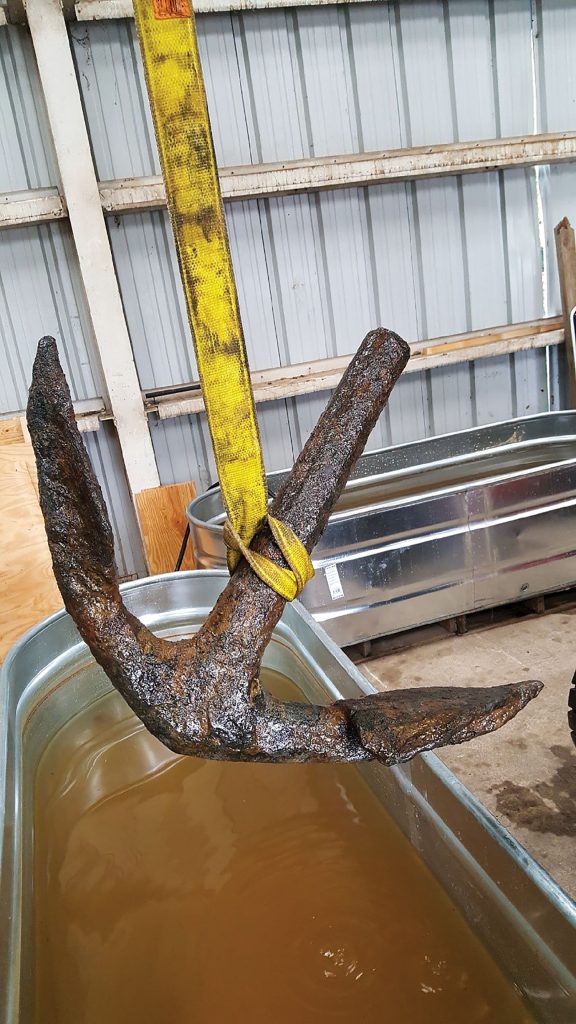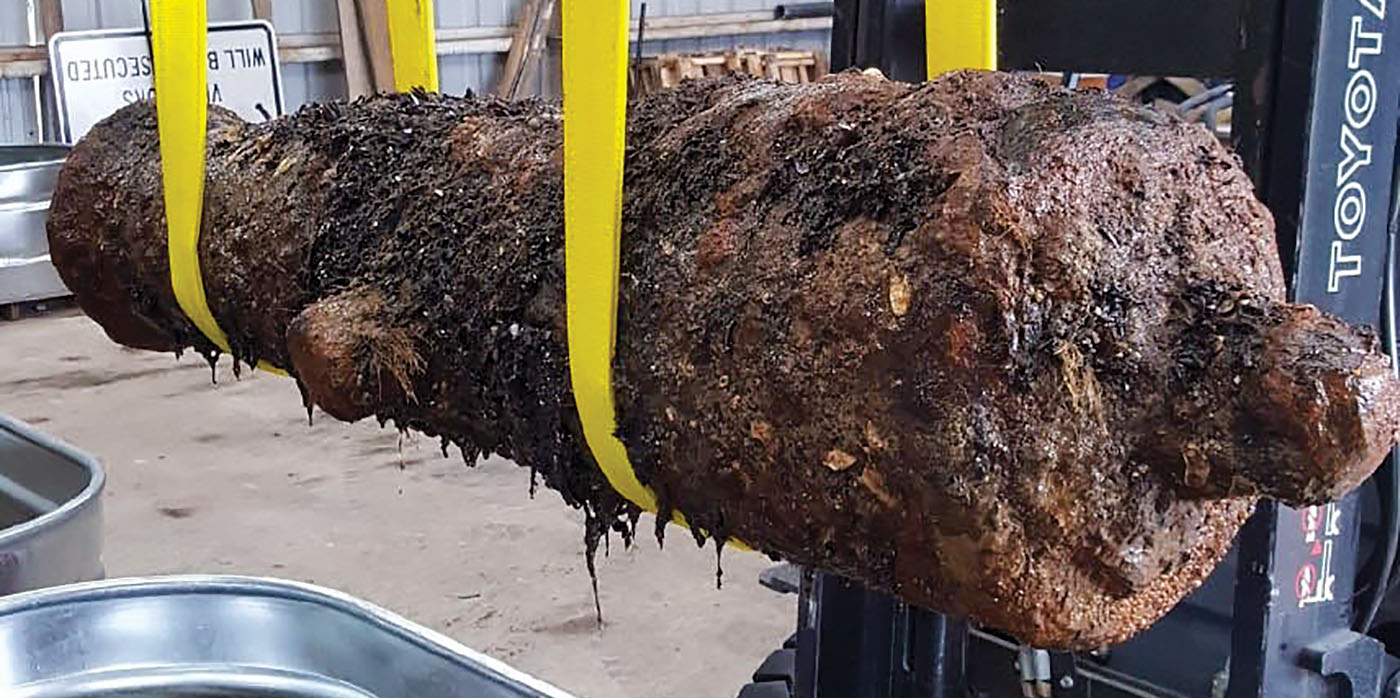As one of the dredge contractors working on the Savannah Harbor Expansion Project, Weeks Marine crewmembers are used to dredging up plenty of sand and other material as the Savannah Engineer District oversees the deepening of the harbor from 42 to 47 feet.

But in late February, the crew turned up something far more rare and archaeologically significant. While working in the vicinity of Old Fort Jackson, a 19th-century fort built in the years leading up to the War of 1812, located just a couple miles east of the city of Savannah, the crew unearthed several cannons, an anchor and a timber, all likely dating to well before the Civil War.
“During clamshell dredging operations, the contractor found these artifacts while screening the maintenance material due to the proximity to the previously recovered CSS Georgia,” said Billy Birdwell, acting chief of corporate communications & senior public affairs specialist for the Savannah District. “This process identifies potential discarded military munitions or unexploded ordnance that may have migrated from the CSS Georgia site into the channel over the past 150 years.”
The CSS Georgia was a Confederate ironclad built in 1862. The steam-powered ship saw little to no action in the Civil War and was scuttled by Confederate forces in 1864 after Savannah fell to Union Maj. Gen. William T. Sherman’s forces. The wreck was discovered and marked in 1968 after it was struck by a dredge, and recovery efforts finally got underway in earnest in 2015 as part of the early stages of the Savannah Harbor deepening project.
And while the care and caution taken during dredging exercises in the vicinity of Old Fort Jackson stem, in part, from the possibility of portions of the CSS Georgia wreck migrating in the dynamic Savannah River, and more directly in accordance with the National Historic Preservation Act, the late-February discovery is likely much older than the Civil War ironclad. Corps officials have not officially dated the artifacts, but archaeologists are exploring possible sources as far back as the 1770s and the American Revolutionary War.
The Corps will analyze the cannons, anchor and timber, conduct underwater surveys and send down divers in an effort to place the items within a more specific historical context.
“Historical records document numerous named wrecks in that vicinity, only one of which is the HMS Rose,” Birdwell said. “We simply don’t have enough information to assign these materials to a specific vessel.”
If tied to the HMS Rose, the discovery would be significant indeed. The Rose, constructed in Hull, England, in 1757, prowled the waters of the American colonies in the 1770s in an effect to inhibit smuggling operations in Rhode Island. The ship also sailed up the Hudson River in the early days of the Revolutionary War. By 1779, with Savannah still under British control, British forces scuttled the Rose in the Savannah River to keep the French fleet from aiding in the American assault on the city.

For now, the objects remain submerged in wet vats in an effort to mimic the environment from which they were removed. Corps officials said they will consult with subject-matter experts as they pinpoint the likely source of the artifacts. In the meantime, dredging in the geo-referenced areas where the discoveries were made remains suspended pending further investigation.
Birdwell said it is somewhat unusual to make a new discovery in an area that has already been extensively excavated and dredged. But for a waterway like Savannah Harbor that’s been in use more than 250 years, there’s no telling what could turn up.
“While it is unusual to find this type of discovery in an area that has been modified to such an extent, the Savannah Harbor has a rich history, and that portion of the river is very dynamic, flowing both ways at different times of the day,” Birdwell said. “Therefore, part of the archaeological investigations will explore historic and cartographic documentation relating to the locations of historic wrecks and hydrographic change in that area to understand how these materials may have been deposited there.”



